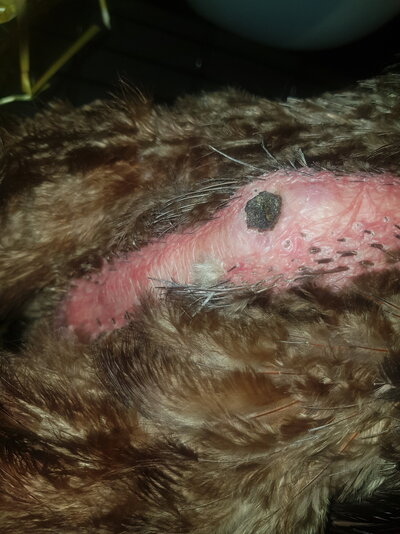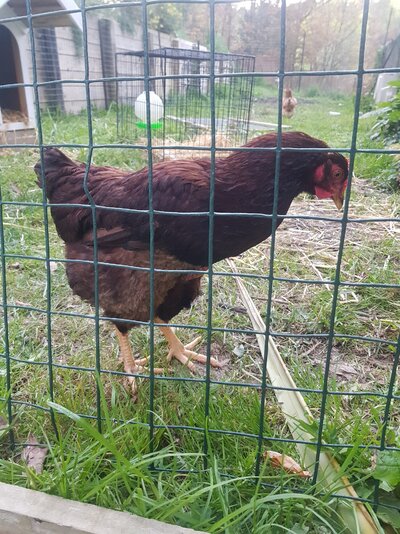AllTheChookins
Hatching
- Oct 18, 2021
- 7
- 10
- 9
Hi everyone, new poster here. Today I picked up a new hen to keep one of my chickens company. The new hen is a Rhode Island Red, about 10 months old. The previous owner needed to rehome her because she was badly bullied by her flock. She had been living along for 2 months at this point. When I picked her up, she was very calm and VERY muddy, with caked on mud/poo everywhere. I didn't get to see where she had been living, though the previous owner said she had dry hay as bedding and has always preferred to lie on the ground rather than roost.
I gave her a long soak and cleaned her. While doing so, I realised half her chest feathers were missing, the area was red and warm, and there was a large firm lump on her lower breast. On top of this, was a coin sized thick black scab. The surrounded skin felt taught and inflamed.

I don't know whether I should keep this new hen seperate incase there is something infectious going on. Or, whether the hen had been bullied into living in a non ideal place, developing a chest blister and abscess and relief from what has to have been a very wet and muddy living situation will go a long way towards fixing it. I have coated the scab in a hydrogen peroxide based wound cream. She looked quite weak and disoriented while bathing her, far too docile, but has since perked up with water and food (I suspect she was quite dehydrated).
I have found several instances of this in these forums but haven't found a follow up post and whether chickens have survived, or cause and solution confirmed. Has anyone dealth with something similar before? Would you advise quarantining this hen or is it likely just a wound that needs healing?
Thank you very much
I gave her a long soak and cleaned her. While doing so, I realised half her chest feathers were missing, the area was red and warm, and there was a large firm lump on her lower breast. On top of this, was a coin sized thick black scab. The surrounded skin felt taught and inflamed.
I don't know whether I should keep this new hen seperate incase there is something infectious going on. Or, whether the hen had been bullied into living in a non ideal place, developing a chest blister and abscess and relief from what has to have been a very wet and muddy living situation will go a long way towards fixing it. I have coated the scab in a hydrogen peroxide based wound cream. She looked quite weak and disoriented while bathing her, far too docile, but has since perked up with water and food (I suspect she was quite dehydrated).
I have found several instances of this in these forums but haven't found a follow up post and whether chickens have survived, or cause and solution confirmed. Has anyone dealth with something similar before? Would you advise quarantining this hen or is it likely just a wound that needs healing?
Thank you very much





